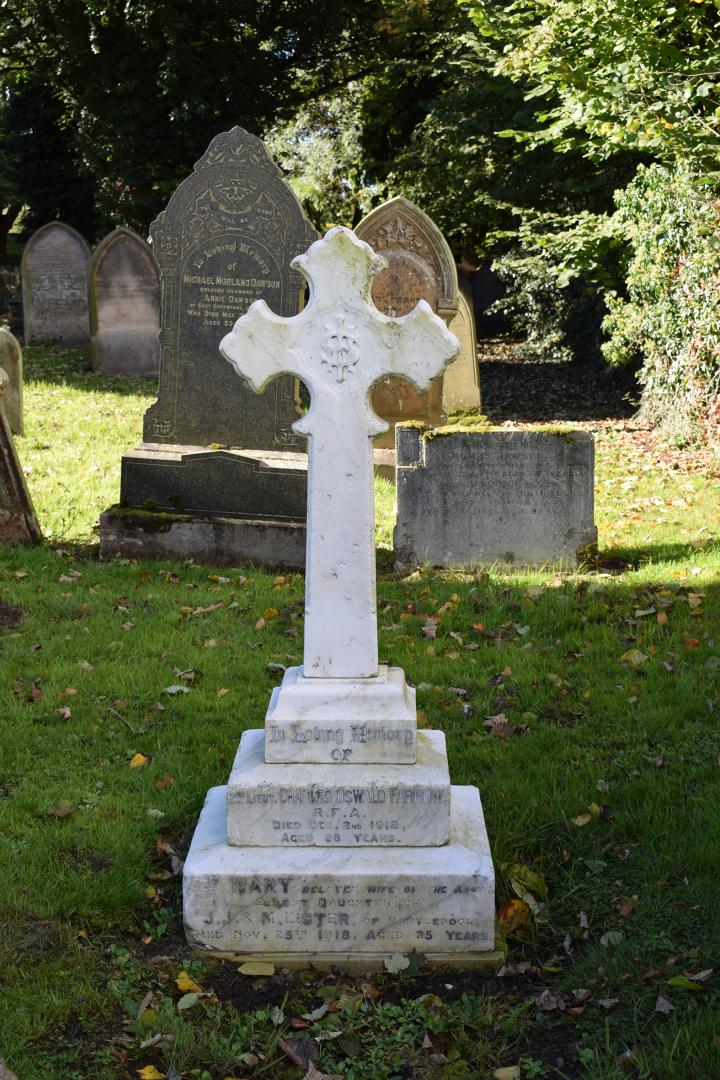AUTUMN 1918 finally brought the longed-for peace.
The dale had marked the Armistice along with the rest of the country with celebratory bell-ringing, special church services, and a children’s tea at Barningham arranged by Lady Milbank.
But a new terror, which would kill more people worldwide than the First World War, was sweeping the country: Spanish flu.
Teesdale did not escape its clutches.
There had been an outbreak of flu in the summer of 1918, which the Mercury editorial of July 10, 1918 put down to a “lowering of vitality” in the district.
One feature of the disease was the mental and physical exhaustion which followed. The summer epidemic had abated by late August but the flu strain which struck in the autumn of 1918 was particularly virulent.
Once it turned to pneumonia there was little that could be done other than keeping the patient comfortable and hoping for the best.
Features of the disease were the extremely high temperature and coughing up of rust-coloured sputum. Victims literally drowned, their lungs filled with fluid.
There were various attempts at treatment and prevention.
Knowles’ Original Cough Mixture was advertised as equally effective as a preventative measure and a dose should be taken before going out in muggy weather.
Quite what this mixture contained is unknown, as is its effectiveness, but bottles were available at 1/3d and 3/- from Knowles’ Chemist, in Market Place, Barnard Castle.
A “dense atmosphere” and a change of wind direction was blamed for influenza spreading to the “hill country and the valleys” in mid-December.
The disease was actually spread by coughs and sneezes over short distances, so wind and weather really had little, if anything, to do with it.
Local doctors were hard pressed to cope and a medical man at Barnard Castle advised that immediately early symptoms were detected, patients should go to bed.
Isolation from others was probably the most effective means of preventing spread. A whist drive and dance in aid of the Cotherstone Sailors and Soldiers Fund scheduled for December 12 and a whist drive and dance in Lunedale on December 20 were postponed due to the influenza outbreak.
On November 13, nine pupils had been sent home ill from Gainford Village School and there were plans to close the school temporarily.
The North Eastern County School (later Barnard Castle School) broke up earlier than planned for Christmas but 159 infected boys stayed behind.
Although the Mercury remarked all the boys were doing well, a master was very ill and several of the teaching and domestic staff had been affected.
The present day school website reports that three boys and a master died.
At the end of October 1918, there had been four deaths at Bowes and no sign of abatement.
By mid-November, the outbreak had spread from South Startforth to the north of the village and a leaflet on the disease had been distributed.
The illness was no respecter of rank. It was reported on December 11, 1918, that Lord Barnard had fallen ill but happily he recovered. He was one of the fortunate ones.
The medical officer updated the local councils on the spread of the disease and the number of fatalities.
He reported influenza complicated by pneumonia had caused five deaths at Startforth, a high toll for a small community.
However, there was good news from Staindrop, as there had been some remarkable recoveries in the village.
Death notices, page 3, Teesdale Mercury, November 13, 1918
EACH statistic, although depressing enough in its own right, represents the loss of a much-loved family member.
Page 3 of the Mercury of November 20, 1918 is particularly sad. Alongside news on how the Armistice had been celebrated were reports on the deaths and funerals of Elizabeth Peacock, of Barningham, and Henry Morton of Mickleton.
Elizabeth, 25, was a volunteer nurse in Newcastle and Henry, 27, was a respected figure in his village. Both had died from influenza.
Their death notices had been side by side in the previous week’s Mercury.
A single white cross at St Mary’s Church, Gainford marks a double tragedy.
Mary Farrow died on November 25, aged 25, followed a week later by her husband 2nd Lieutenant Charles Farrow aged 28.
Charles was on home leave and they were visiting Gainford, a popular holiday destination at the time, from their home in Hartlepool.
Both succumbed to pneumonia following influenza, orphaning their only child.
These four deaths fit the pattern of fatalities from the disease. Surprisingly, the most likely to die were not the very young or the very old but previously healthy young adults, like Elizabeth, Henry, Mary and Charles.
We are all familiar with the seasonal warnings to have our flu vaccine.
No such measures were available in 1918 and the anguish and loss caused by this dreaded disease 100 years should not be forgotten.
Gillian Hunt






